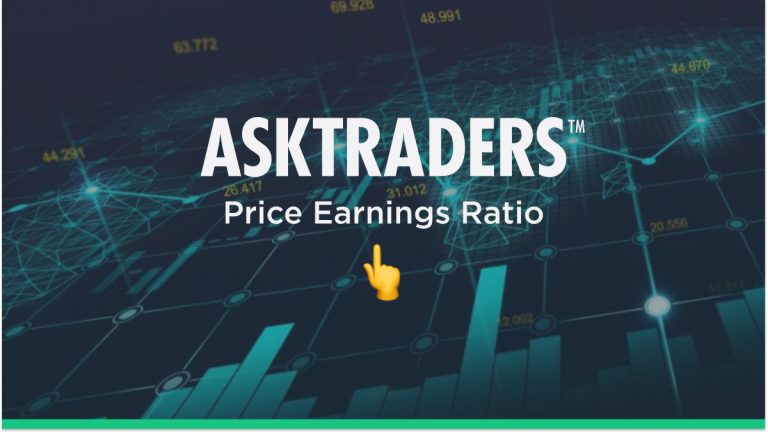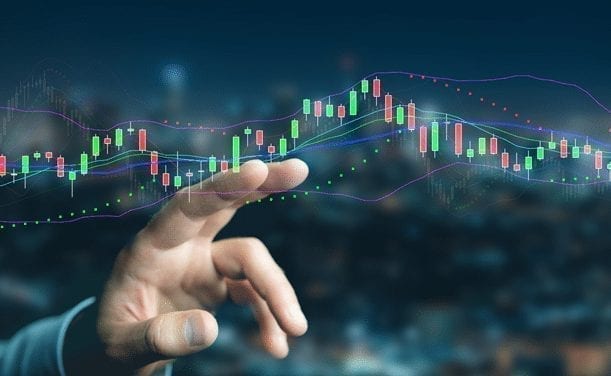
The earnings per share for the past 12 months yield the trailing P/E and next year’s estimated earnings give the projected/forward price- earnings ratio. When it comes to assessing a PE ratio, what is good is a matter of debate.
- The value of P/E ratio
- Seeing the bigger picture
- Predictive power of P/E ratio
Growth Versus Value Debate
Much like the entire business, the value of the stock is linked to the ability of the company to generate cash. A low P/E ratio of stocks suggests a value orientation. The P/E ratio also indicates market expectations regarding future stock performance. Higher P/E ratios suggest more growth expectations for the company. Using the P/E ratio, the relative earning power of companies, irrespective of their stock price or size, can be compared. Essentially, the price-earnings ratio indicates the dollar amount investors can expect to invest in a company for one dollar of the earnings. The investor should be conscious that earning do not translate in dividends or cash received from the company.

P/E ratio is, therefore, sometimes referred to as price multiple, as it reveals the amount investors are willing to pay for every single dollar of earnings. When it comes to investor expectations, a high P/E ratio of stocks suggests investors expect higher future earnings growth, as against businesses with a low price-earnings ratio value. A low P/E, on the other hand, suggests the company may be undervalued presently or is performing well compared to past trends. It’s all a matter of researching enough, once the P/E ratio has been calculated and analysed. The ratio serves as a useful indicator, but it’s important to remember absolute values should never be considered in isolation.
Moving Past High and Low P/E Ratios
While in theory, this ratio indicates the per dollar earnings, this simplistic notion of P/E ratio does not consider company’s growth patterns. While the EPS in trailing ratios are from the previous year, the P/E is much more than just a measure of past performance. The ratio also considers market growth expectations. Stock prices reflect what investors think of the future worth of the company based on upcoming cash flows and profits. A more sophisticated way of measuring the ratio is to not consider the high or low value on its own, but to compare the ratio to the industry average.
The company which has higher PE than the market or industry average indicates positive growth expectation but can also indicate an expensive company. Of course, when it comes to the PE ratio, what is good depends on whether a growth or value orientation is taken. Consider Microsoft, the tech giant for example. This IT major had a P/E ratio of 100 while it was expanding to new markets and attained growth. At present, Microsoft is a massive corporate entity and no longer considered just a growth company.
Understanding the Value of a P/E Ratio
Reduction in the ratio is noted as high growth start-ups make the transition to stable blue-chip companies. What is important here is that the price-earnings ratio must be considered in light of the company’s position in the lifecycle and relative to its industry peers. Newer companies with more growth prospects may have high P/E ratios. What is good becomes a big question mark here, because current earnings may be small as money is spent to grow. These companies have a chance to garner profit in the coming years. Certain sectors like tech and biotechnology carry higher than moderate P/E ratios for this reason.
While the P/E ratio of stocks is a much better indicator of their value than market price alone, there are limits to the analysis. While comparing P/E ratios of two different companies, company growth rates and industry or market sector studied must be taken into account. If, for instance, the company has only grown at 3% per annum in the past and still has a high P/E, something is clearly wrong.
If projected growth rates don’t offer a justification for the P/E, the stock is clearly overpriced. Projected EPS needs to be used for calculating a more realistic ratio, in this context.
Higher Versus Lower P/E Ratios
When it concerns the PE ratio, what is good also depends on other things. Whether a stock with a low P/E ratio is a better investment depends on these factors. Consider that a stock trading at $80 with an EPS of $4 would have a P/ E ratio valued at 20, as would a stock trading at $40 with an EPS of $2! So, the same P/E ratio does not mean equivalent earnings or share value. If the P/E ratio of a stock is 80, investors pay $80 for each dollar of earning. But this a bad deal compared to a company with a P/E ratio of 20.
Consider that the higher P/E ratio may be based on reliable earnings estimate while the other one’s future earnings are a big question mark. The company with the higher P/E commands more money for higher future earnings. Ultimately, the price-earnings ratios are a means of standardising the ratio, which can be seen as a benchmark and used to find out if the stock is worth purchasing. A higher P/E ratio means investors anticipate more growth in the future. Companies losing money do not have this ratio.
Another way of evaluating the stock is to compare the P/E ratio with one of a recognised sector or market index. This approach puts the P/E value in the context of the sector or the whole market and provides information about the company positioning in sector as well as in the whole market.
Why Low Isn’t Always Bad
P/E ratios vary across industries too. So, while considering the PE ratio, what is good depends on the particular market and industry to which the business belongs. Companies in industries that are stable and mature may have moderate growth potential and lower P/E ratios. Companies in quick growing industries with robust future potential but a great deal of volatility which could go either ways may command a higher P/E ratio of stocks. Few stock market metrics are as hotly debated as the P/E ratio, though. Initially made popular by Benjamin Graham (also billionaire Warren Buffet’s mentor), an epic value investor, P/E ratios are still used to assess attractiveness of potential investments.
In his work “Security Analysis” published way back in the 1930s, Graham suggested P/E ratio of 16 is as high a price as can be paid in any investment purchase in “common stock”. But Graham also emphasised that all common stocks with the same average earnings should not bear the same value. P/E ratios are, therefore, not a measure of value in the absolute sense, but just a method of establishing a middle upper limit. Graham did point out that various industries trade at varying multiples on the basis of growth outcomes or perceptions.
How a Good P/E Ratio Changed Across Time
The moderate upper limit was left aside when the dot com boom hit the industry. Before the dot com bubble, many had felt P/E ratios were a useless measure. Now, it is clear the ratio varies as stock price fluctuates across time and more or less profit is earned. For high P/E ratio bearing companies, investors are paying a higher stock price against earnings. This is because investors believe the company has excellent growth prospects.
While a low P/E ratio indicates that a company investor gets more earnings for investment, it could reflect good value or simply lack of investor confidence in the stock. So, when it concerns comparing P/E ratios, comparing apples to oranges can prove counterproductive. Seasoned traders hold that P/E ratios are simply one measure and should be seen as part of the larger picture regarding company management and prospects.
Stocks with a high ratio could be higher in volatility and this may put pressure on companies to justify valuation. Growth stocks may not be such a good idea for risk averse investors. Those with low ratios are undervalued possibly because stock price is lower than fundamentals. This is a deal for the risk conscious trader, especially if the investment is made before the stock corrects itself.
Is P/E Ratio Steady Over Time?
This is generally not the observed trend. Contrary to most investor beliefs, experts point out that P/E ratios are not a relevant price movement factor. Research conducted from 1953 to 1988 demonstrated the average P/E ratio for best performing stocks right before equity boom was 20, while the Dow’s P/E ratio for this period was 15! Superstar stocks could be overvalued. Theoretically, the stocks at higher multiples should revert to industry norms.
At at different points, historical trends show that major discrepancies were found, wherein high ratio stocks continued to soar, while lower-priced counterparts remained at rock-bottom rates. Over the decades, P/E ratios have only been rising. Research conducted at Yale in 2000 saw P/E ratios for the S&P index reached historical highs from the close of 2008 to the third quarter of 2009. The index itself grew by 38% at the same period, despite higher investment ratios. Additionally, comparing a tech company for instance, to a utility company is valueless. Utilities are low growth, stable companies with low multiples, while exponential growth and constant change makes tech companies the exact opposite. So, drawing conclusions on the basis of a P/E ratio alone could create errors and lead to wrong trades.

Do P/E Ratios Have Predictive Value?
For the P/E ratio to have predictive value, the key is to examine them over long periods of time, while considering forward looking factors such as economic environment and earnings estimates. Cyclical Adjusted Price to Earning Ration (CAPE) developed by Robert Shiller might come to help in incorporating some fundamental factors in the calculation. CAPE is obtained by dividing the price to the 10-year average earning adjusted for inflation.
Even low P/E ratios relative to falling prestige or market relevance are red flags. A high or low ratio may not indicate much, but it is a sign worth considering when considered in conjunction with the bigger picture. With P/E ratios, no absolute judgement of good or bad is right when the multiple is considered in isolation.
Like anything cheap, for instance a stock with low P/E value could be a bargain or a big disappointment. Wall Street Journal and other noted publications indicate the other measures like price-to-sales and price-to-cash-flow must be considered along with company history and economy strength. According to them, a high-forward ratio means the stock could grow; it could also be an overoptimistic assessment.
The Big Picture
As economies mature, inflation rises. Certain industries like banks work well as they charge higher rates on products. On the other hand, towards the end of the recession, interest rates are low, and banks earn less revenue. While there is no hard and fast rule or value in response to what a good P/E ratio is, most value investors feel lower ratios are better. But for the growth investor, a company with high growth prospects could have a high P/E ratio because investors are bullish about prospects. So, researching the big picture is important, while placing a trade.
Therefore, there is no such thing as a “good” PE ratio. When the ratio is high, one can say the company shares are either too expensive or growth prospects are bright. When it is low, there could be a value play or the company’s future is not too positive. Even the average P/E varies across companies in a wide range of industries.
Conclusion: Calculating the PE Ratio
Calculating a justified P/E ratio could be the way out too, apart from seeing the big picture. But the fact remains that P/E ratio is one of many metrics for evaluating stocks. It may seem like an important ratio but basing your decision to invest only on this metric has negative consequences. Value and growth investors have considered the ratio to be a useful measure of assessing a company’s worth. It’s only a matter of understanding how to use the P/E ratio effectively.
While the “Father of Value Investing”, Benjamin Graham saw the ratio as the quickest or easiest way to assess if stocks trade on solid or speculative basis, the reality is different in present times. However, the P/E ratio does add value, especially when seen in the light of a company’s underlying earning power and overall growth plus the economic climate it is surviving or thriving in.
PEOPLE WHO READ THIS ALSO VIEWED:




